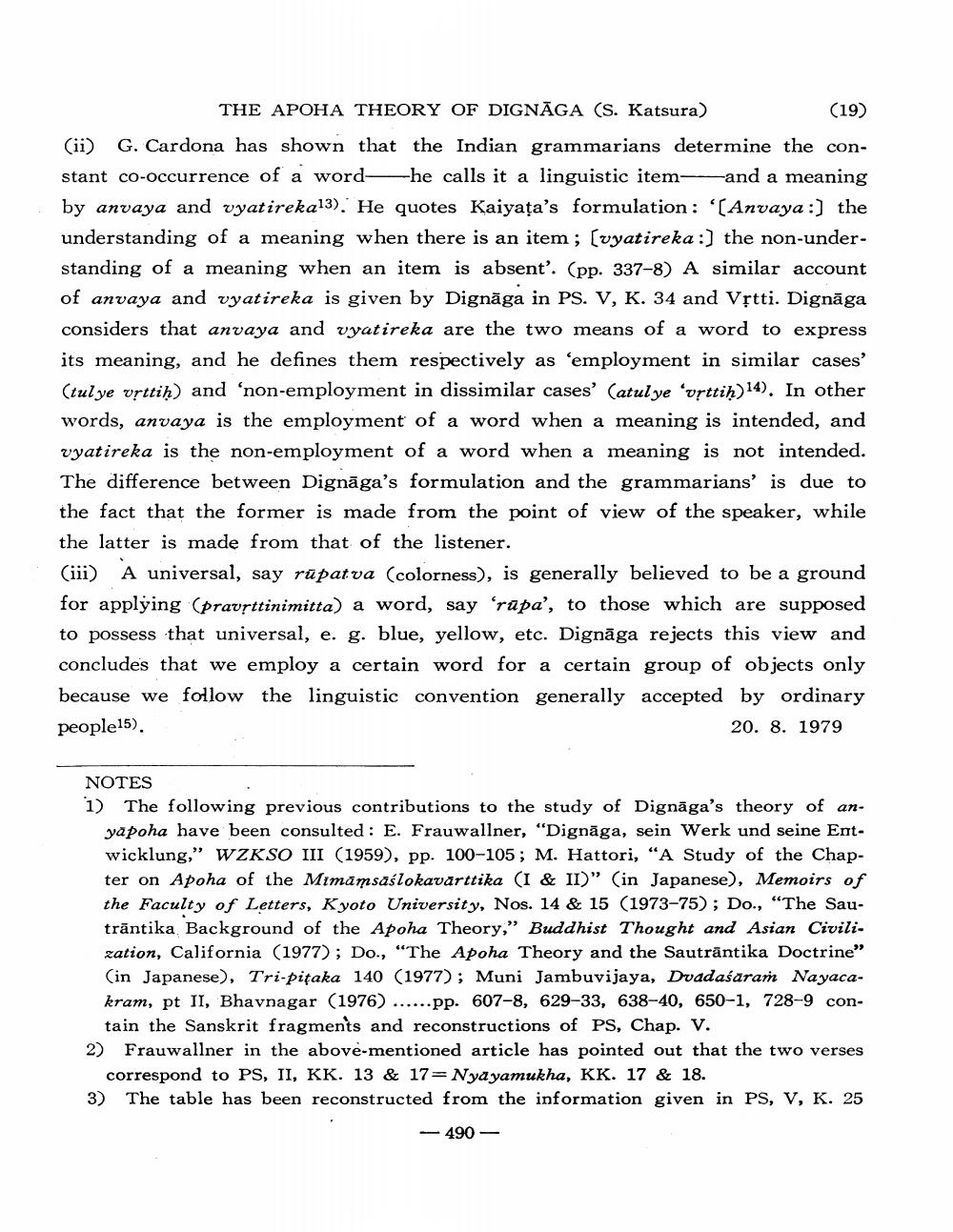Book Title: Apoha Theory Of Dignaga Author(s): Shoryu Katsura Publisher: Shoryu Katsura View full book textPage 4
________________ THE APOHA THEORY OF DIGNAGA (S. Katsura) (19) (ii) G. Cardona has shown that the Indian grammarians determine the constant co-occurrence of a word- -he calls it a linguistic item-and a meaning by anvaya and vyatireka13). He quotes Kaiyața's formulation: "[Anvaya :) the understanding of a meaning when there is an item; [vyatireka:] the non-understanding of a meaning when an item is absent'. (pp. 337-8) A similar account of anvaya and vyatireka is given by Dignaga in PS. V, K. 34 and Vrtti. Dignāga considers that anvaya and vyatireka are the two means of a word to express its meaning, and he defines them respectively as 'employment in similar cases' (tulye vṛttih) and 'non-employment in dissimilar cases' (atulye 'vrttih)14). In other words, anvaya is the employment of a word when a meaning is intended, and vyatireka is the non-employment of a word when a meaning is not intended. The difference between Dignaga's formulation and the grammarians' is due to the fact that the former is made from the point of view of the speaker, while the latter is made from that of the listener. (iii) A universal, say rapatva (colorness), is generally believed to be a ground for applying (pravṛttinimitta) a word, say 'rapa', to those which are supposed to possess that universal, e. g. blue, yellow, etc. Dignaga rejects this view and concludes that we employ a certain word for a certain group of objects only because we follow the linguistic convention generally accepted by ordinary people15) 20. 8. 1979 NOTES 1) The following previous contributions to the study of Dignaga's theory of anyapoha have been consulted: E. Frauwallner, "Dignāga, sein Werk und seine Entwicklung," WZKSO III (1959), pp. 100-105; M. Hattori, “A Study of the Chapter on Apoha of the Mimamsaślokavarttika (I & II)" (in Japanese), Memoirs of the Faculty of Letters, Kyoto University, Nos. 14 & 15 (1973-75); Do., "The Sautrantika Background of the Apoha Theory," Buddhist Thought and Asian Civilization, California (1977); Do., "The Apoha Theory and the Sautrāntika Doctrine" (in Japanese), Tri-pitaka 140 (1977); Muni Jambuvijaya, Dvadaśaram Nayacakram, pt II, Bhavnagar (1976)...... pp. 607-8, 629-33, 638-40, 650-1, 728-9 contain the Sanskrit fragments and reconstructions of PS, Chap. V. 2) Frauwallner in the above-mentioned article has pointed out that the two verses correspond to PS, II, KK. 13 & 17= Nyayamukha, KK. 17 & 18. 3) The table has been reconstructed from the information given in PS, V, K. 25 -490Page Navigation
1 2 3 4 5
